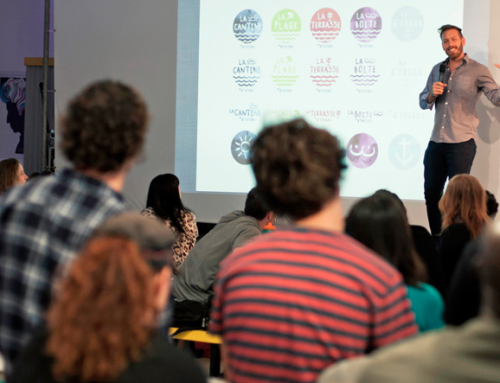Max, it’s Time to Move On
Choosing Max Factor as a brand to bring back to the US turned into an interesting learning experience. I had no idea the brand revolutionized Hollywood makeup, defined signature looks for icons like Marilyn Monroe and continuously reinvented their products to accommodate technological advancements in the world of film.
For our primary research we conducted two expert in-depth interviews, an at-home autoethnography (makeup log), a brand party with two participants, and a product review. Considering the planning and logistics involved in the process, I can honestly say that without my team it would have been extremely challenging to tackle all of those interviews within a three week period.
To get our insight we followed the RGA method of See/Think & Feel/Do/Say. Combining our social listening, SWOT, and brand analysis with our primary research we came to the insight that even though women claim they use less makeup than in the 70s it is in fact not true. People still use just as much makeup, it the look people desire that has changed. Women still use a lot of makeup to achieve a “natural and flawless” look daily. It’s true that it appears that women wear less makeup in current day than back in the days of Max Factor (the 50s) however, in truth, the amount hasn’t changed all that significantly, it is the palette and application of makeup that has changed.
Before Max Factor got discontinued in the US (in 2010) it was sold at drug stores, however the price point was above average for drug store pricing and this was causing confusion among customers as to why Max Factor was sold in drug stores. The price point was too intimidating for the environment. This is why we opted to redirect distribution to beauty stores like Ulta and Sephora to avoid this. Since these merchants allow for a higher price point to be accepted by customers, we observed the brands sold in these channels. This led us to observe that almost all high-end makeup brands don’t have taglines, and because of this we decided to discard Max Factor’s current tagline, “the makeup of makeup artists.” From our primary research we concluded that people think Max Factor’s packaging is “old fashioned” and nothing about it attracts the customer. To address the issue we proposed a redesign of the packaging, still keeping with the existing colour scheme of gold and black but in a sleek and sexy way. This will help strengthen the positioning of the brand in beauty stores versus drugstores.
For the campaign we came up with the idea #EverydayGlamour. Since Max Factor has owned glamour since the 50s we felt we could quite let it go. The thing that needed to be changed was their branding, the brand needs to let go dead Hollywood stars as the face of the brand. Instead, we suggest they seek out active, influential bloggers and use them as the face for Max Factors. They are the true stars of today. Not to ask them to endorse Max Factor, but to actually make them brand ambassadors and use them in Max Factor ads. This will help make the shift from “the makeup of makeup artists” to something everyday people can use and look beautiful.
Executing this extensive project with a group was a great experience. We each brought our own perspectives and came out with something all three of us were content with. That kind of outcome isn’t always easy to achieve and I’m glad that for the last project of my masters program, I had a pleasant group experience.








